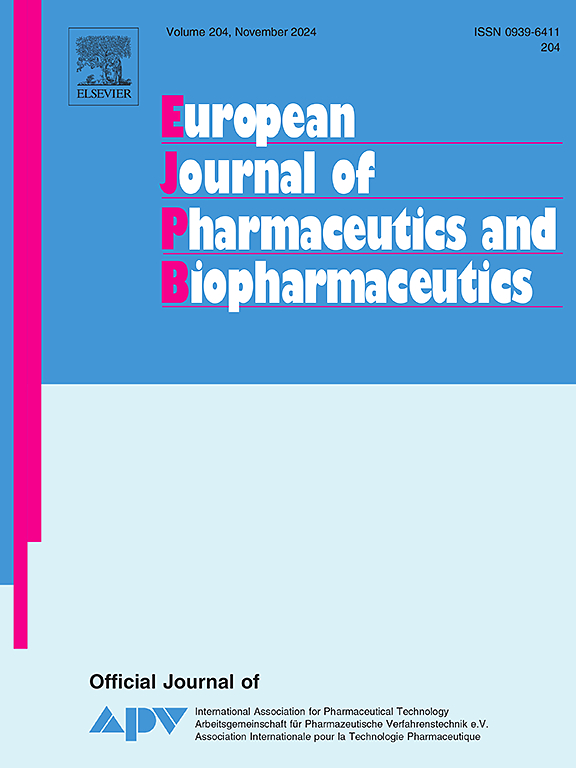Exploring starch-based excipients in pharmaceutical formulations: Versatile applications and future perspectives
IF 4.4
2区 医学
Q1 PHARMACOLOGY & PHARMACY
European Journal of Pharmaceutics and Biopharmaceutics
Pub Date : 2025-04-24
DOI:10.1016/j.ejpb.2025.114727
引用次数: 0
Abstract
Starch, a naturally abundant and biocompatible polysaccharide, serves as a key excipient in pharmaceutical formulations, enhancing drug stability, efficacy, and manufacturability. This review explores the properties, modifications, and diverse applications of starch-based excipients. Native starches from corn, potato, rice, and wheat are commonly used as disintegrants, binders, and fillers. Physical (e.g., pre-gelatinization), chemical (e.g., cross-linking, acetylation), and enzymatic modifications improve their functionality, such as enhanced stability and colon-specific drug delivery. Starch excels as a binder, improving tablet cohesion and strength, and as a disintegrant, promoting rapid drug release. It also supports controlled and sustained-release systems and advanced drug delivery methods, like nanoparticles and microparticles. Compared to other natural and synthetic excipients, starch offers advantages in biodegradability, non-toxicity, and cost-effectiveness, despite challenges like stability and batch variability. Innovations such as starch nanocrystals show promise in boosting drug solubility and bioavailability. Looking ahead, starch-based excipients hold potential for sustainable pharmaceutical development, personalized medicine, and 3D printing.

探索淀粉基赋形剂在药物配方:多功能应用和未来的前景
淀粉是一种天然丰富且具有生物相容性的多糖,是药物配方中的关键赋形剂,可提高药物的稳定性、有效性和可制造性。本文综述了淀粉基赋形剂的性质、改性及其多种应用。来自玉米、土豆、大米和小麦的原生淀粉通常用作崩解剂、粘合剂和填料。物理修饰(如预糊化)、化学修饰(如交联、乙酰化)和酶修饰可改善其功能,如增强稳定性和结肠特异性给药。淀粉作为粘合剂,提高片剂的凝聚力和强度;作为崩解剂,促进药物快速释放。它还支持控制和持续释放系统以及先进的药物输送方法,如纳米颗粒和微粒。与其他天然和合成辅料相比,淀粉具有可生物降解性、无毒性和成本效益方面的优势,尽管存在稳定性和批次可变性等挑战。淀粉纳米晶体等创新技术有望提高药物的溶解度和生物利用度。展望未来,淀粉基辅料在可持续制药发展、个性化医疗和3D打印方面具有潜力。
本文章由计算机程序翻译,如有差异,请以英文原文为准。
求助全文
约1分钟内获得全文
求助全文
来源期刊
CiteScore
8.80
自引率
4.10%
发文量
211
审稿时长
36 days
期刊介绍:
The European Journal of Pharmaceutics and Biopharmaceutics provides a medium for the publication of novel, innovative and hypothesis-driven research from the areas of Pharmaceutics and Biopharmaceutics.
Topics covered include for example:
Design and development of drug delivery systems for pharmaceuticals and biopharmaceuticals (small molecules, proteins, nucleic acids)
Aspects of manufacturing process design
Biomedical aspects of drug product design
Strategies and formulations for controlled drug transport across biological barriers
Physicochemical aspects of drug product development
Novel excipients for drug product design
Drug delivery and controlled release systems for systemic and local applications
Nanomaterials for therapeutic and diagnostic purposes
Advanced therapy medicinal products
Medical devices supporting a distinct pharmacological effect.

 求助内容:
求助内容: 应助结果提醒方式:
应助结果提醒方式:


